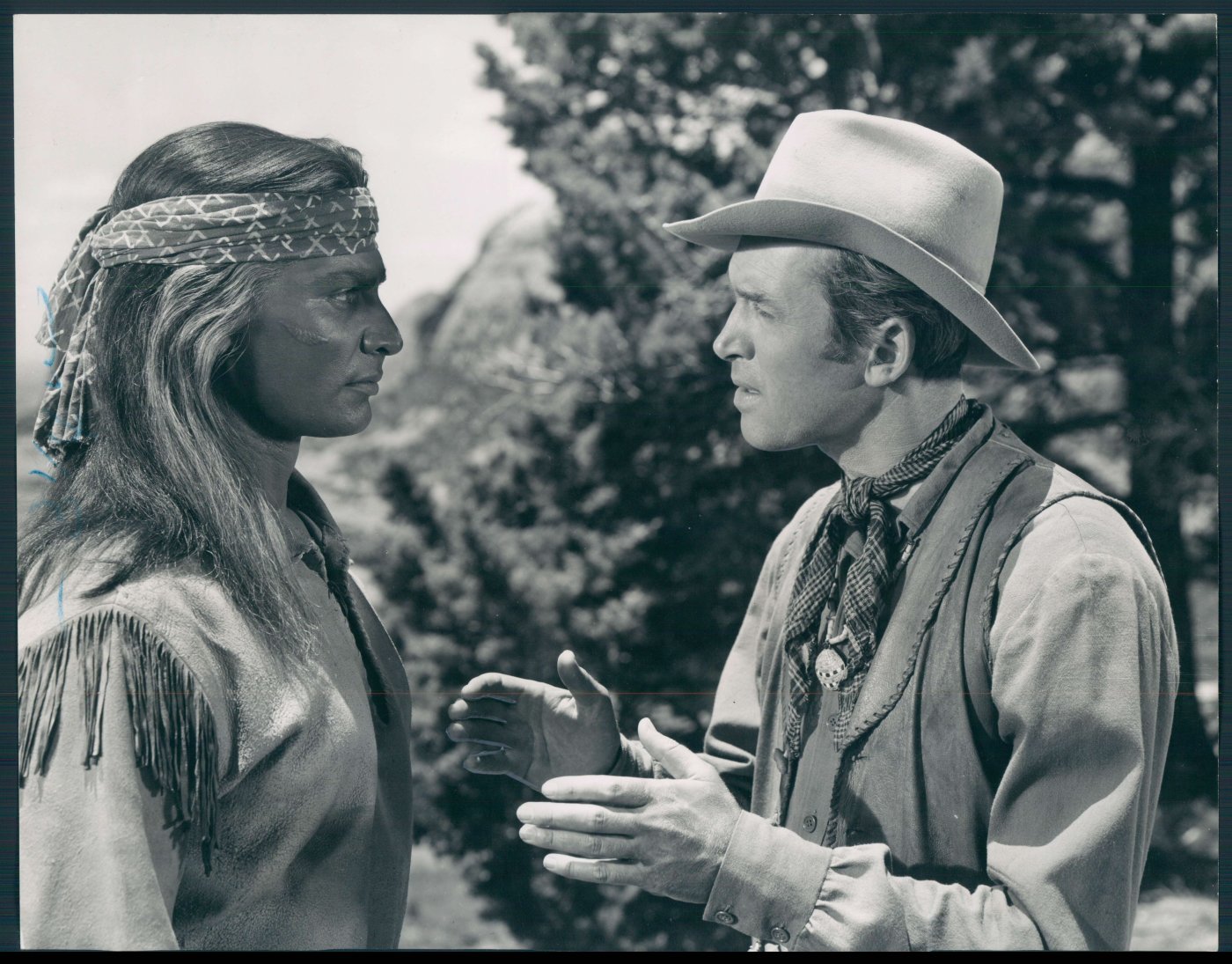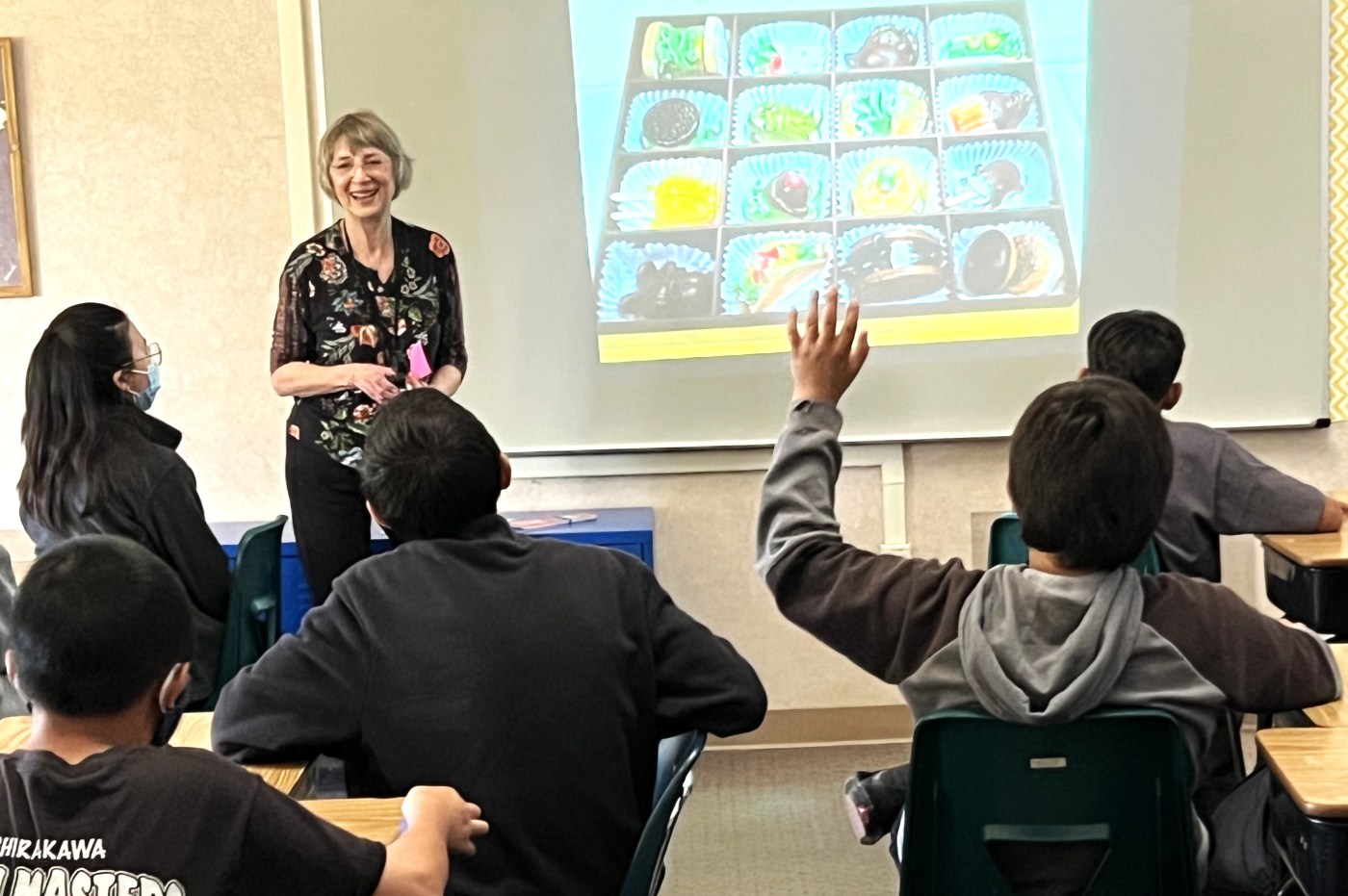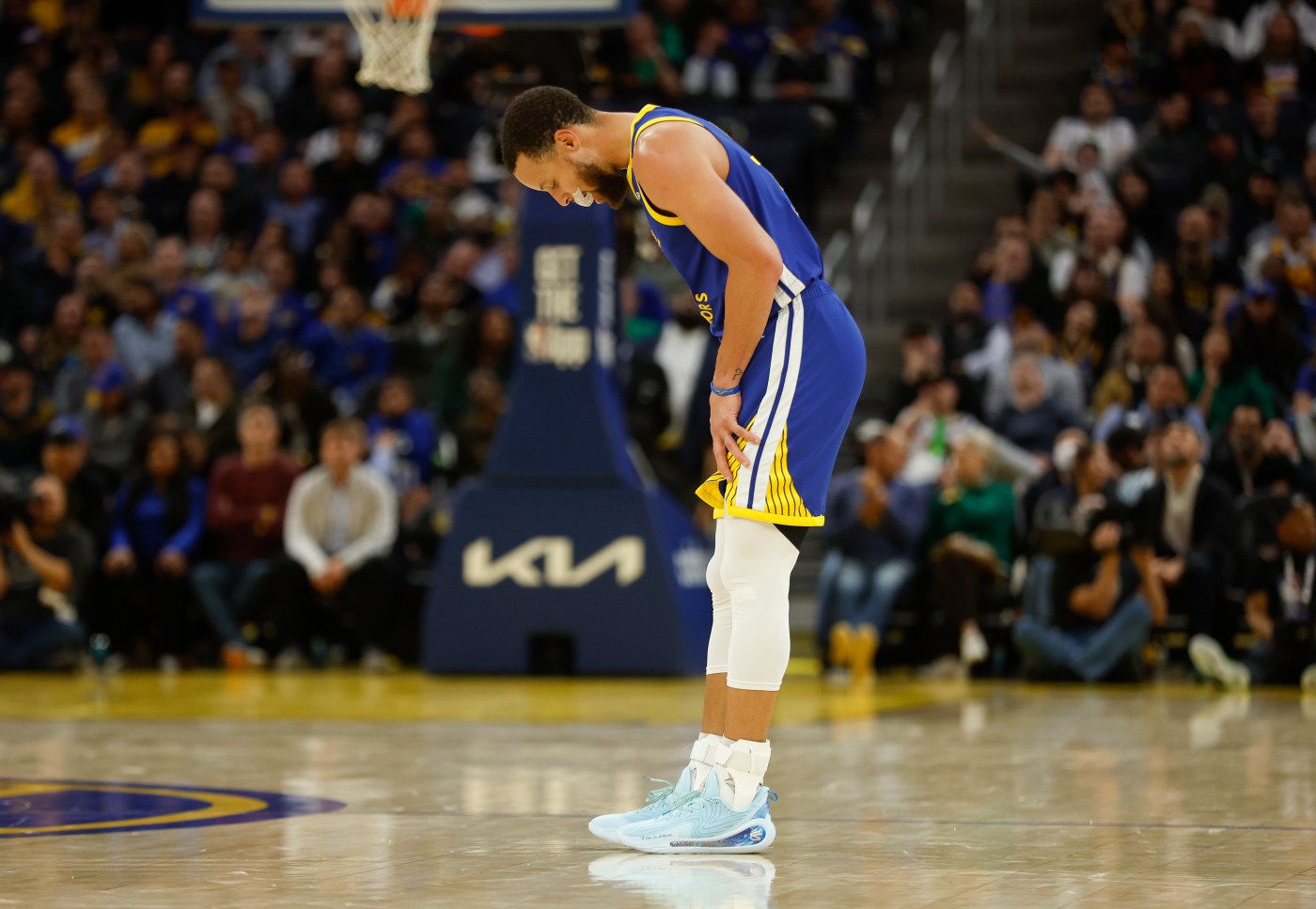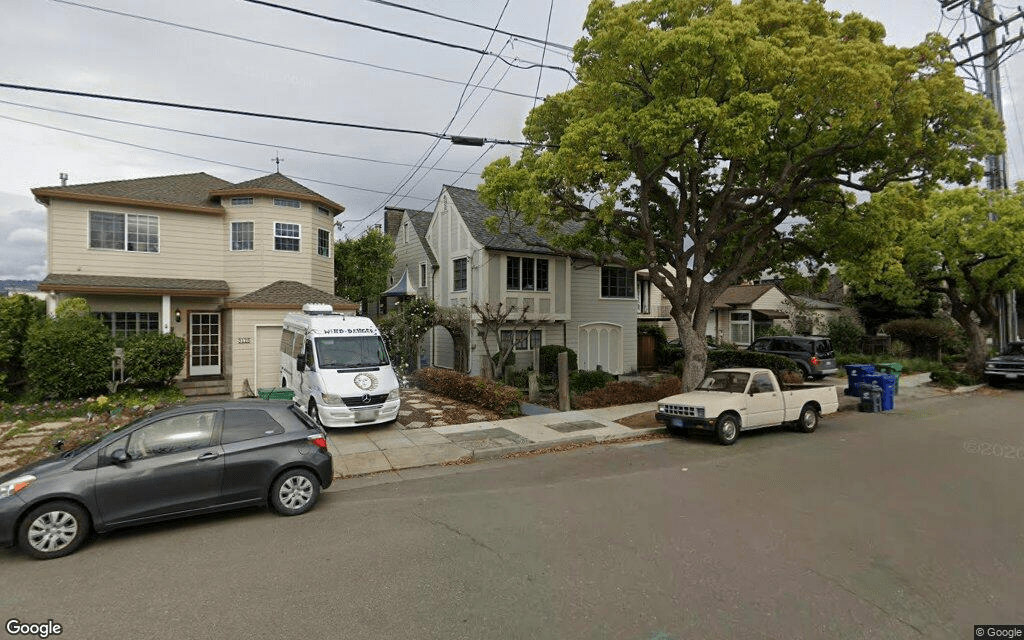You won’t find Hollywood director Delmer Daves, a 1927 graduate of Stanford University, included on some lists of great American movie directors. Daves, who died in 1977, was a “studio director,” someone the bosses could rely on to produce solid, entertaining work in a range of genres, from war films to noir to glossy melodramas like “A Summer Place.”
But in recent years, Daves’ name has appeared alongside John Ford, Howard Hawks, Clint Eastwood and the Coen Brothers as a filmmaker known for creating groundbreaking, enduring, classic Westerns.
One of Daves’ classics is “Broken Arrow.” Released 75 years ago to commercial and critical success, the film represented “a turning point” in Hollywood’s portrayal of Native Americans, according to the new book “Broken Arrow” (University of New Mexico Press) by film scholar and author Angela Aleiss.
“Broken Arrow” also is receiving the big screen treatment Saturday and Sunday at the Stanford Theatre, as part of the Palo Alto theater’s fall film series on classic Hollywood Westerns.
Dave’s Western follows the unlikely friendship between Cochise, the legendary Chiricahua Apache leader, and Tom Jeffords, a real-life U.S. Army Scout – played by movie stalwart James Stewart – who worked to bring peace between the Apache and their white colonizers. Unlike many Westerns of Hollywood’s Golden Age, “Broken Arrow” resisted the conventional stereotypes of Native Americans, who often appeared in movies as savage warriors attacking white settlers.
“‘Broken Arrow”’demonstrates the postwar ideal that Natives and whites can coexist peacefully,” Aleiss writes in her book, which is part of the Reel West series on select Western films. The friendship between Cochise and Jeffords was supposed to “serve as a model for tolerance between both races while emphasizing that whites must reexamine their prejudices and learn something about Native American culture.”
The movie was released as the Civil Rights Movement gained momentum. Progressive filmmakers in post-World War II Hollywood were eager to reflect what they hoped was American’s evolving views on race, according to Aleiss. “Broken Arrow” shows Jeffords learn the Apaches’ language, participate in their ceremonies and gain respect for their fighting skills and attitudes on life and honor. Above all, the film portrays Cochise as a heroic figure – a charismatic leader who was formidable in battle as well as in negotiating on behalf of his people.
Daves very much wanted “Broken Arrow” to reflect the Apache point of view, according to Aleiss. “I have a great respect for Indians, and I tried to show this in my film,” he once told The Stanford Daily.
Born and raised in San Francisco, Daves grew up fascinated with stories about Native Americans and the Old West. Family members had crossed the Sierra Nevada or traveled through Indian country in an ox-drawn covered wagon. Distant relatives also settled in Cochise County, Arizona, not far from where the historical story of “Broken Arrow” took place.
Daves couldn’t wait to explore the Southwest himself but tabled his travel plans while at Stanford. As an undergraduate, he juggled his classes in pre-law with a variety of extracurricular activities, including starring in campus theater productions, serving as president of his class and designing numerous ink sketches for Stanford’s yearbook — a talent that would come in handy when he created movie storyboards or showed an eye for production design for his films.
Upon graduating, Daves shocked his parents by going on an “insane expedition” to northern Arizona, where he spent several months wandering through Navajo and Hopi country, according to Aleiss. He wrote, painted, slept under the stars and discovered the gorgeous red rock cliffs around Sedona, Arizona. Daves eventually made his way to Hollywood, where he acted in films. But he realized his talent was behind the camera, first as a screenwriter, then as a director. His first directing credit was for the World War II submarine drama, “Destination Tokyo,” starring Cary Grant and John Garfield. After the war, he dabbled in noir – and returned to a hometown, San Francisco setting – by directing Humphrey Bogart and Lauren Bacall in “Dark Passage” in 1947.
“Broken Arrow” was Dave’s first Western. (Seven years later he directed another classic Western, the taut psychological drama, “3:10 to Yuma,” which was remade in 2007 with Russell Crowe and Christian Bale.) For “Broken Arrow” Daves was excited to work on location in Sedona and to portray Native Americans “as human beings.” He worked with a screenplay by the blacklisted writer Albert Maltz, who similarly wanted to take a stand against racism.
Some critics theorized that “Broken Arrow” could be an allegory about Maltz being one of the Hollywood Ten and serving time in prison for refusing to answer questions before the House Un-American Activities Committee about his Communist Party membership. Meanwhile, Black newspapers praised the film upon its release for addressing Black-white racial issues vis- à-vis Native Americans, Aleiss writes.
As groundbreaking as “Broken Arrow” might be on a range of topics, Aleiss’ book exposes its flaws, especially from a 21st century vantage point. In taking a stand against racism, the film highly romanticizes Cochise and Apache culture. It also casts white actors in leading Native American roles. The role of Cochise went to Jeff Chander, a Jewish actor from New York. Still, Chandler’s commanding performance holds up 75 years later, and he earned him an Academy Award nomination for best supporting actor.
“Broken Arrow” also gives Jeffords a love interest: A young Apache woman named Sonseeahray. This interracial love story was central to the film’s marketing campaign, according to Aleiss. But the part of Sonseeahray also went to a young white actress, Debra Paget, who dyed her blond hair dyed black in order to play Hollywood’s “ideal of an Indian maiden,” Aleiss said. At least for key supporting roles, as well as extras, Daves was able hire local Native American talent, as well as established performers. Jay Silverheels, a Mohawk actor known for playing Tonto on TV’s “The Lone Ranger,” was cast in the pivotal role of Geronimo.
Viewers of “Broken Arrow” will see that everyone speaks English, even among Native American characters. Meanwhile, Aleiss points out artistic liberties that erode accuracy. The film was shot in Sedona because Daves wanted to use its stunning scenery, though Cochise’s story actually took place in the rugged Dragoon Mountains to the south. Moreover, the film’s portrayal of a girl’s coming-of-age ceremony is based on Western Apache rather than Chiricahua traditions.
Perhaps most problematic is that “Broken Arrow” condenses Cochise’s story to two years and downplays, or omits altogether, historical events to provide a somewhat optimistic, Hollywood ending. The film’s conclusion argues that Apache integration into white society is key for a permanent peace, and reinforces a belief that Native Americans must adopt Anglo values to survive, according to Aleiss. This belief has long been entrenched in U.S. culture, going back to President Ulysses S. Grant’s Peace Policy toward Native Americans in the 1870s, which unfortunately led to war and violence against Native Americans. Federal policies in the 1950s sought to erase tribal status and traditions.
In the film, Cochise agrees to a proposed reservation and advises Geronimo and his other warriors to give up their hunting, nomadic lifestyles and accept the influx of white settlers. “Why should not the Apache be able to learn new ways?” he asks. “Broken Arrow” ends in 1872. Two years later, Cochise died, the U.S. government abolished the Chiricahua Indian Reservation and war continued until Geronimo and his followers surrendered in 1886, resulting in their 27-year imprisonment in Florida, Alabama and Oklahoma.
Aleiss writes that “Broken Arrow” at least foreshadows this outcome, invites multiple interpretations and contains powerful statements about Hollywood attitudes toward Native Americans. She said that recent scholarship recognizes “Broken Arrow” as the first major civil-rights-oriented American Indian film produced by Hollywood, which would have pleased Daves. He once expressed hope that his and other pro-Indian Westerns “offered a safe vehicle” to express then-new ideals “on racial and political coexistence.”





